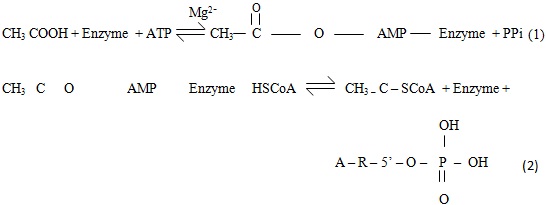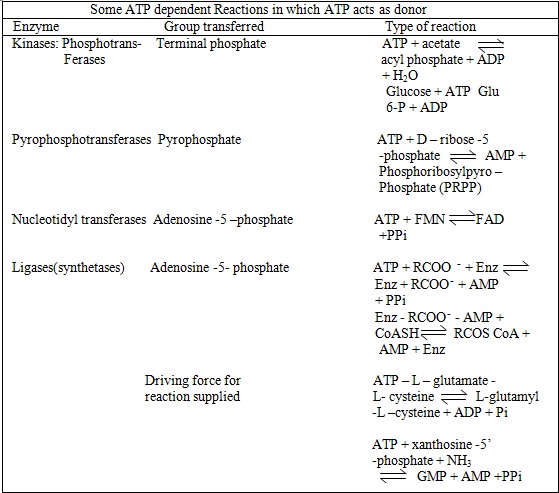Adenosine Triphosphate As Coenzyme
Adenosine Triphosphate As Coenzyme Assignment Help | Adenosine Triphosphate As Coenzyme Homework Help
Adenosine Triphosphate as Coenzyme
Adenosine triphosphate (ATP) is an energy rich intermediate which also functions as a coenzyme in a large number of biochemical reaction. A large number of enzymes require ATP as substrate or energy source ATP contains two high energy rich bonds which release free energy upon hydrolysis.ATP is regenerated during biological oxidations. Thus ATP has a high potential for group transfer, some of which are as follows:1. Transfer of orthophosphate group (Pi)
2. Transfer of pyrophosphate group (PPi)
3. Transfer of adenosine monophosphate moiety (AMP)
4. Transfer of adenosine group
All ATP dependent enzymes require a metal ion, either magnesium or manganese, and involve the formation of a covalent bond between substrate molecules and the phosphate group donated. For example, transfer of orthophosphate group to water. The enzymes catalyzing this type of reaction which carry on hydrolysis accompanied by release of energy are called ATP ases. Another groups of enzymes called kinases transfer phosphate groups of ATP to –OH, acyl or amide groups for example, hexokinase transfers a phosphate groups to glucose during glycolysis.
Kinases also catalyze synthetic reaction through substrate –linked phosphorylation and synthesize ATP from ADP.
Another class of enzymes ,called ATP-dependent synthetases, are concerned with the activation of carboxyl groups:
Another class of enzymes ,called ATP-dependent synthetases, are concerned with the activation of carboxyl groups:


For more help in Adenosine Triphosphate as Coenzyme please click the button below to submit your homework assignment